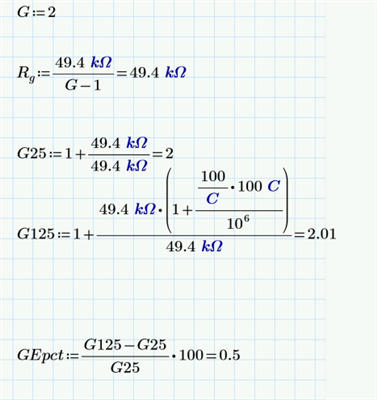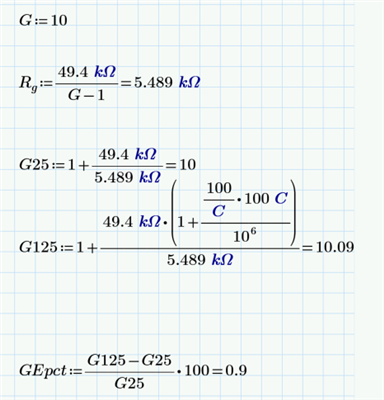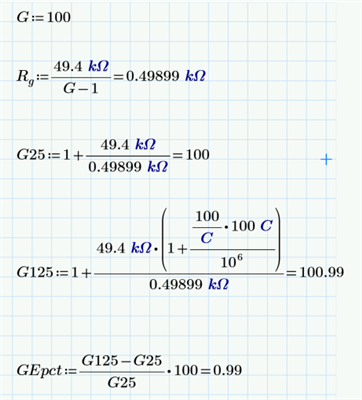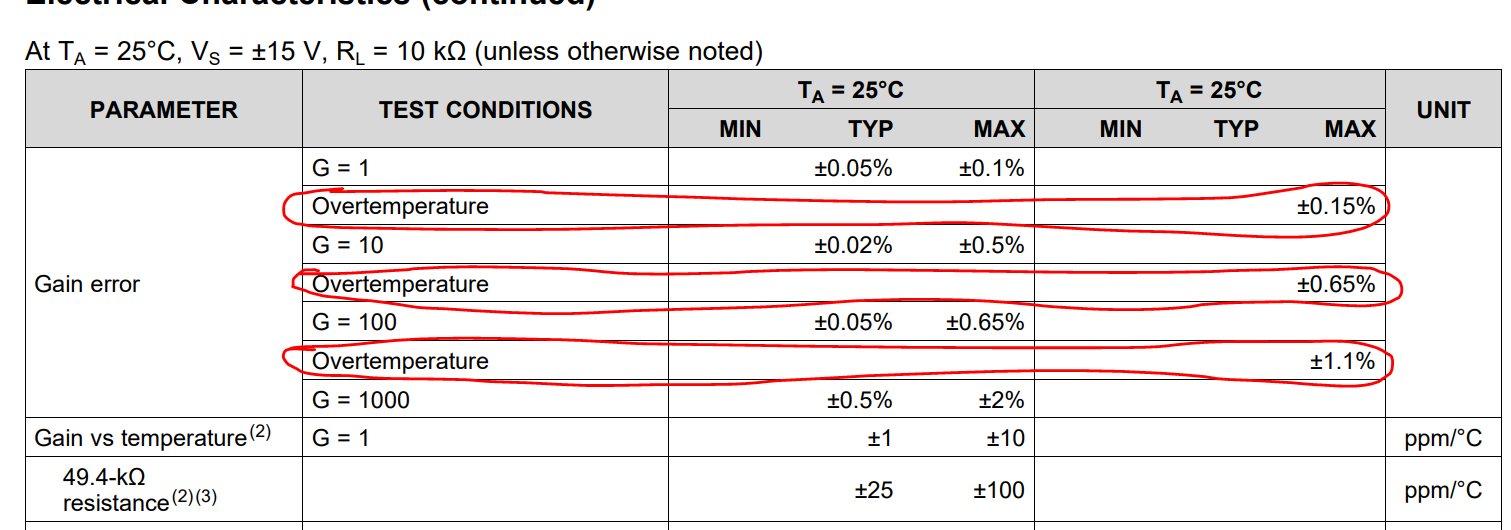Hi Experts,
Seeking your assistance on the following queries:
[1] In the INA129-EP DS (see below), 2 column in electrical characteristics are for TA=25°C, is it right that the second is for T=125°C?
[2] Gain error is given for different gain value, on my understanding, the error for G=1 is due to a different part than the one provided for G=10. So, For a gain >1 (for example, 2), should I calculate the maximum gain by : 1*(1+0.001)+ 1*(1+0.005)=2.006 -> gain error(for G=2) = 0.3%
[3] Same question with the thermal drift. For example G=2, T=125°C and an ideal external resistor, gain (for G=2 @125°C) =1*(1+0.001+10^-5*dT)+1*(1+0.005+10^-4*dt)= 2.017 -> gain error (for G=2 @125°C)= 0.85%
[4] Compared to [3], what is the meaning of max gain error provided for G=10 overtemperature? Should I use the min value of both?

Thanks ahead for your support.
Regards,
Archie A.












